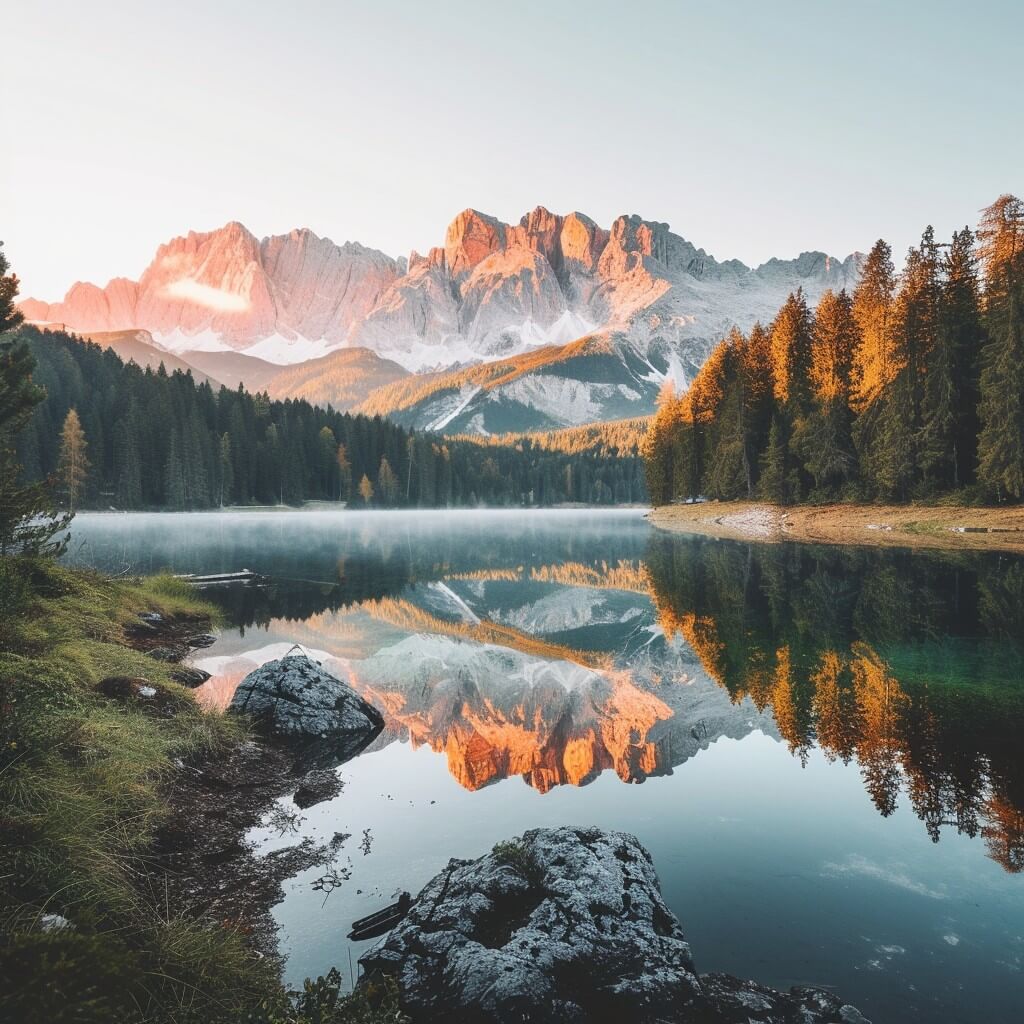Are you planning to tackle New Zealand’s iconic Tongariro Alpine Crossing? Whether you’re an experienced hiker or a first-timer, preparing for this adventure can be both exciting and daunting.
Common questions and concerns often revolve around what to pack, how to prepare for changing weather, and how to ensure a safe and enjoyable hike.
Let’s dive into a seasonal packing guide that will help you feel ready and confident for your journey.
We’ll break down the essentials, share relatable examples, and make this guide feel like a conversation with a knowledgeable friend.
Common Questions and Concerns
- What should I pack for the Tongariro Alpine Crossing?
- How do I prepare for the unpredictable weather?
- What are the must-have items for each season?
- How can I make sure I’m comfortable and safe during the hike?
Year-Round Essentials
Regardless of the season, some items are essential for every Tongariro Alpine Crossing adventure:
- Sturdy Hiking Boots: Good grip and ankle support are crucial.
- Backpack: A comfortable, weather-resistant pack with a capacity of 20-30 litres.
- Layers of Clothing: Breathable, moisture-wicking base layers, insulating middle layers, and a waterproof outer layer.
- Water and Snacks: At least 2 litres of water and high-energy snacks like nuts, dried fruit, and energy bars.
- First Aid Kit: Basic first aid supplies, including blister plasters.
- Map and Compass: Even if you’re familiar with the trail, these are important safety tools.
- Sun Protection: Sunscreen, sunglasses, and a wide-brimmed hat.
Spring (September – November)
Springtime in Tongariro can be unpredictable, with a mix of warm days and lingering snow. This season offers blooming wildflowers and fewer crowds, making it an appealing time to visit.
Packing Tips:
- Thermal Layers: Early mornings and evenings can be chilly. A thermal base layer can make a significant difference.
- Lightweight Jacket: A waterproof and windproof jacket is essential for sudden spring showers.
- Gaiters: Protect your boots and lower legs from mud and snow. These can also help keep your feet dry when traversing wet areas.
Example: When I hiked in October, I was glad I packed my thermal leggings. They kept me warm during the brisk morning start, and I could easily shed layers as the day warmed up.
Additional Spring Items:
- Moisture-Wicking Socks: Keeping your feet dry is crucial to prevent blisters.
- Compact Towel: Useful for wiping sweat or drying off after a rain shower.
- Binoculars: Spring is a great time for birdwatching as many species are active.
Summer (December – February)
Summer offers the most stable weather, but it’s still important to be prepared for sudden changes.
The longer daylight hours provide plenty of time to complete the hike, and the warm temperatures make for a more comfortable experience.
Packing Tips:
- Extra Water: The warmer weather means you’ll need more hydration. Consider carrying an additional water bottle or hydration bladder.
- Light, Breathable Clothing: Opt for moisture-wicking fabrics that dry quickly.
- Insect Repellent: Summer can bring out the bugs, especially in the early morning and late afternoon.
Example: During my January hike, I made sure to start early to avoid the midday heat. My lightweight, long-sleeve shirt protected me from the sun and kept me cool.
Additional Summer Items:
- Wide-Brimmed Hat: Provides shade and helps keep you cool.
- Cooling Towel: A great way to stay refreshed during the hike.
- Electrolyte Tablets: Add these to your water to maintain hydration levels.
Autumn (March – May)
Autumn brings cooler temperatures and vibrant landscapes, but also more variable weather.
This season is known for its beautiful fall foliage, making the hike even more picturesque.
Packing Tips:
- Insulating Layers: Think fleece or down jackets for warmth. Layers are key to adapting to the changing temperatures.
- Rain Gear: Autumn showers can appear suddenly. A good rain jacket and rain cover for your backpack are essential.
- Warm Hat and Gloves: Keep extremities warm during cooler days and in higher altitudes.
Example: On an April hike, a surprise rain shower made me grateful for my packable rain jacket. It kept me dry and comfortable until the sun reappeared.
Additional Autumn Items:
- Thermos: Hot drinks can provide warmth and comfort during cooler days.
- Hand Warmers: Useful for those particularly cold mornings or evenings.
- Extra Socks: Changing into a dry pair can make a big difference if your feet get wet.
Winter (June – August)
Winter hikes are more challenging and require careful preparation due to snow and ice.
However, the snow-covered landscape offers a unique and stunning experience.

Packing Tips:
- Crampons and Ice Axe: Essential for navigating icy sections safely.
- Heavy-Duty Insulation: Thick, warm layers and a down jacket are crucial. Layering is key to staying warm.
- Headlamp: Shorter daylight hours mean you might finish in the dark. Ensure you have fresh batteries.
Example: My July trek was a true winter wonderland. The crampons were a lifesaver on the icy paths, and my headlamp ensured I could safely navigate the trail as dusk fell early.
Additional Winter Items:
- Thermal Flask: Hot drinks or soup can provide warmth and energy.
- Balaclava or Face Mask: Protects your face from cold winds.
- Emergency Blanket: Lightweight but essential for emergencies.
Trail Safety and Comfort Tips
- Check Weather Forecasts: Always check the weather forecast before heading out. The Tongariro Alpine Crossing is known for its rapidly changing weather.
- Inform Someone of Your Plans: Let a friend or family member know your hiking plans and estimated return time.
- Start Early: Begin your hike early in the day to avoid afternoon weather changes and to ensure you have plenty of daylight.
- Know Your Limits: The crossing is a challenging hike. Be honest about your fitness level and prepare accordingly.
- Stay Hydrated and Fed: Regularly sip water and eat high-energy snacks to maintain your energy levels.
Personal Stories and Tips
Spring Adventure: Keeping Warm in the Chill
When I first tackled the Tongariro Alpine Crossing in October, I was unsure how cold it might get. I packed a thermal base layer and was so thankful for it.
The morning was crisp, and those extra layers kept me comfortable until the sun started to warm things up.
I also packed a lightweight, waterproof jacket which proved invaluable when a brief shower caught us by surprise.
Remember, it’s easier to shed layers if you get too warm than to cope with being cold and damp.
Summer Journey: Hydration and Sun Protection
Hiking in January brought its own challenges. The weather was perfect, but the sun was strong.
I started the hike early to avoid the heat of the day, wearing a long-sleeve, moisture-wicking shirt to protect my skin from the sun and keep cool.
I carried extra water and used electrolyte tablets to stay hydrated.
One memorable tip I picked up was using a cooling towel—simply soak it in water, wring it out, and drape it around your neck for instant relief.
Autumn Expedition: Handling the Unpredictable Weather
April was an ideal time for my hike, but it was the unexpected rain that taught me a valuable lesson.
I had a compact rain jacket in my pack, which saved me from getting soaked during a sudden downpour.
The autumn colours were breathtaking, and the cooler temperatures made for a comfortable trek.
I also found that a thermos with a hot drink was a delightful treat during breaks, keeping me warm and boosting my morale.
Winter Wonderland: Navigating Snow and Ice
My July hike was like stepping into a snowy fairytale. The trail was covered in a blanket of snow, making the scenery even more magical.
However, the snow and ice presented their own set of challenges. I was grateful for my crampons, which provided much-needed traction on icy patches.
A down jacket kept me warm, and hand warmers were a blessing for my fingers.
I also packed a headlamp, which came in handy as the days were shorter and we finished the hike as dusk approached.
Conclusion
Preparing for the Tongariro Alpine Crossing requires thoughtful planning and packing, but the rewards are well worth the effort.
By considering the seasonal variations and packing accordingly, you can ensure a safe and enjoyable experience on this remarkable hike.
Whether you’re navigating spring’s unpredictable weather, basking in summer’s stable conditions, enjoying autumn’s vibrant landscapes, or embracing the challenges of a winter wonderland, being prepared is key.
Remember, the essentials—sturdy boots, layered clothing, hydration, and safety gear—form the foundation of a successful hike.
Tailoring your gear to the specific demands of each season ensures you stay comfortable and ready for whatever nature throws your way.
Drawing from personal experiences and common concerns, we’ve aimed to create a guide that feels like advice from a trusted friend, making your preparation process straightforward and enjoyable.
Don’t forget to share your own experiences and tips, as the hiking community thrives on shared knowledge and support.
Whether you’re a seasoned hiker or embarking on your first alpine adventure, the Tongariro Alpine Crossing promises an unforgettable journey through one of New Zealand’s most stunning landscapes.
Happy hiking, and may your adventure be filled with breathtaking views, lasting memories, and the confidence that comes from being well-prepared.






